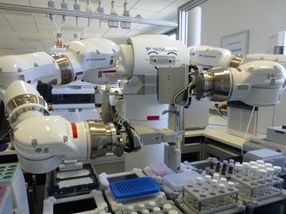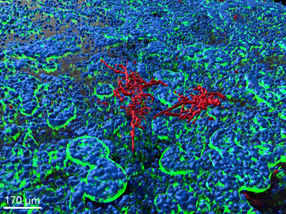Thermo Fisher Scientific Develops Method to Detect Dangerous Carbonyl Compounds
New Method Uses Thermo Scientific UHPLC/UV Technology for Trace-Level Analysis
Thermo Fisher Scientific Inc. announced that it has developed a powerful method for the trace-level analysis of carbonyl compounds in a wide range of matrices. Carbonyl compounds, hazardous pollutants released from diverse sources including motor vehicles and industrial emissions, have been shown to have adverse effects on human health. This new UHPLC/UV method enables the separation, detection and quantitation of parts per billion (ppb) concentrations of low molecular weight carbonyls in complex samples, safeguarding human health and ensuring compliance with industry regulations. The new method is detailed in an application note entitled “Quantitative Analysis of Carbonyl-DNPH Derivatives by UHPLC/UV,” available to download.
Carbonyl compounds from motor vehicle and industrial emissions are precursors to ground-level ozone, a major component of smog, and are strongly associated with respiratory and pulmonary problems. They are also found in food and drinking water and various indoor living and working environments. Formaldehyde, a common indoor pollutant, is released from numerous sources including plywood, furniture, paper products, glues, cosmetics, tobacco smoke and many others. Formaldehyde and acetaldehyde have been classified as probable or known human carcinogens by regulatory agencies including the United States Environmental Protection Agency (EPA) and International Agency of Cancer Research (IARC).
Most read news
Organizations
Related link
Other news from the department research and development

Get the analytics and lab tech industry in your inbox
By submitting this form you agree that LUMITOS AG will send you the newsletter(s) selected above by email. Your data will not be passed on to third parties. Your data will be stored and processed in accordance with our data protection regulations. LUMITOS may contact you by email for the purpose of advertising or market and opinion surveys. You can revoke your consent at any time without giving reasons to LUMITOS AG, Ernst-Augustin-Str. 2, 12489 Berlin, Germany or by e-mail at revoke@lumitos.com with effect for the future. In addition, each email contains a link to unsubscribe from the corresponding newsletter.
Most read news
More news from our other portals
See the theme worlds for related content
Topic world UV/Vis spectroscopy
UV/Vis spectroscopy is a powerful tool in analytics. It uses the ultraviolet and visible light spectrum to measure the absorption of molecules, providing insights into their structure and concentration. Whether determining protein concentrations, characterizing compounds or monitoring chemical reactions, UV/Vis spectroscopy provides accurate and reproducible data.

Topic world UV/Vis spectroscopy
UV/Vis spectroscopy is a powerful tool in analytics. It uses the ultraviolet and visible light spectrum to measure the absorption of molecules, providing insights into their structure and concentration. Whether determining protein concentrations, characterizing compounds or monitoring chemical reactions, UV/Vis spectroscopy provides accurate and reproducible data.
Topic world HPLC
HPLC is a key technology in modern analytical chemistry. It enables the separation, identification and quantification of components in complex mixtures with high precision and efficiency. Whether in the analysis of active pharmaceutical ingredients, the quality control of foodstuffs or the examination of biological samples - HPLC is often the method of choice for demanding separation tasks.

Topic world HPLC
HPLC is a key technology in modern analytical chemistry. It enables the separation, identification and quantification of components in complex mixtures with high precision and efficiency. Whether in the analysis of active pharmaceutical ingredients, the quality control of foodstuffs or the examination of biological samples - HPLC is often the method of choice for demanding separation tasks.





















































